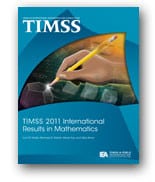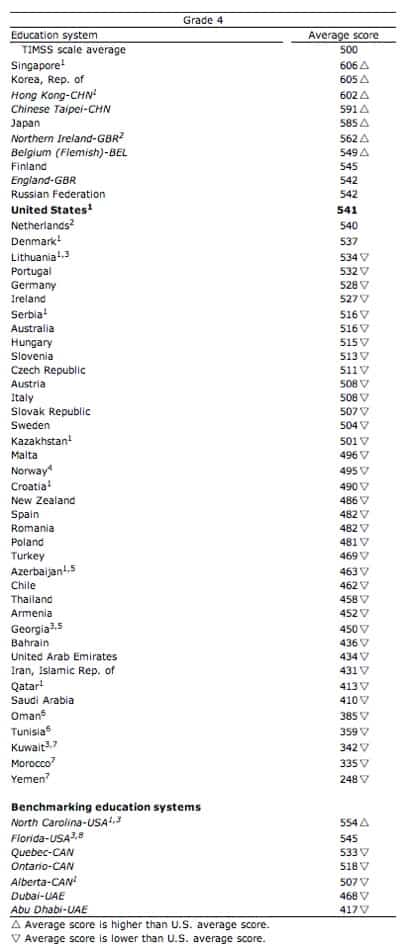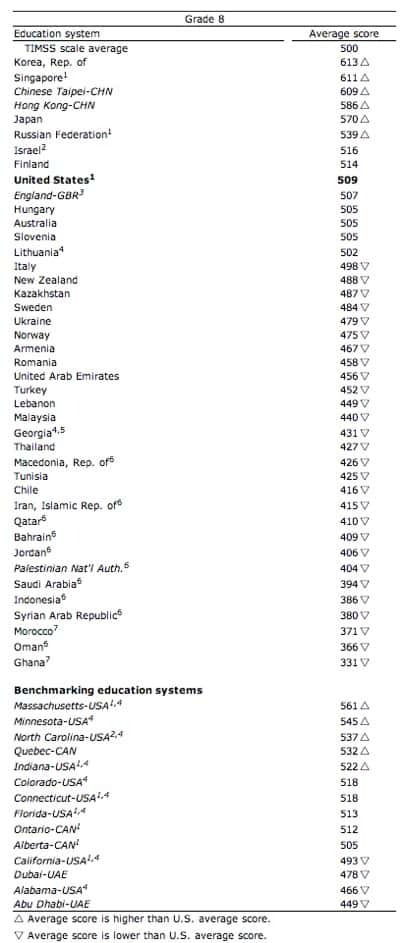 For the past 20 years, the TIMSS (Trends in International Mathematics and Science Study) has measured mathematics and science achievement of participating students at the fourth and eighth grades. It has been conducted on a regular 4-year cycle since 1995.
For the past 20 years, the TIMSS (Trends in International Mathematics and Science Study) has measured mathematics and science achievement of participating students at the fourth and eighth grades. It has been conducted on a regular 4-year cycle since 1995.
For U.S. Educators, TIMSS is valuable since it compares the achievement of American students to their peers in other countries. From the National Center for Education Statistics:
TIMSS provides reliable and timely data on the mathematics and science achievement of U.S. 4th- and 8th-grade students compared to that of students in other countries.
TIMSS 2011 truly was a global study; 52 countries and 7 education systems participated in 4th Grade, while 45 countries and 14 education systems were involved at the 8th Grade level.
Last week, TIMSS 2011 was released. Note that all scores are adjusted to a 500 scale average. The results (…drumroll please…):
For 4th Grade Math, the top scoring nations are:
1. Singapore, average score 606
2. Republic of Korea, 605
3. Hong Kong, 602
4. Chinese Taipei, 591
5. Japan, 585
—
11. United States, 541
The following North American jurisdictions also participated in 4th Grade Math:
North Carolina, 554
Florida, 545
Quebec, 533
Ontario, 518
Alberta, 507
For 8th Grade Math, the top scoring nations are:
1. Republic of Korea, average score 613
2. Singapore, 611
3. Chinese Taipei, 609
4. Hong Kong, 586
5. Japan, 570
—
9. United States, 509
The following North American jurisdictions also participated in 8th Grade Math:
Massachusetts, 561
Minnesota, 545
North Carolina, 537
Quebec, 532
Indiana, 522
Colorado, 518
Connecticut, 518
Florida, 513
Ontario, 512
Alberta, 505
California, 493
Alabama, 466
A summary of TIMMS 2011 results is available here. Data tables with results for 4th and 8th Grade mathematics are here.
A listing of all participating entities and their TIMSS 2011 math scores for 4th and 8th Grades is reproduced below:
The National Center for Education Statistics is the source of Tables and other information extracted from TIMSS 2011 in this post.





















Teaching student to be patient when reding a math text, and teaching them to think on what they have read and the teachers should be patient and dragging the students to think by asking them questions that needs a short answers that will led them to anderstand the solution, and the batter is to do all that inside the classroom, and to make it to be interesting sessions by intreducing to them real life word problems
Because if the word problems are not realistice then they would not see the reason of studying math.
Teacher should not ask for help from parents, and parents should not interferes with the teaching proses,
Becouse what had belt up in schools could be rewind by parents.
As have been said by you Cassy ״let the students do the math”.